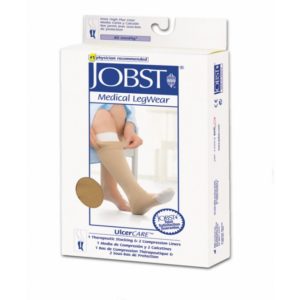Product Description
Long distance travel, whether by automobile, train, or airline can be associated with leg discomforts and risks. Lack of leg movement gives way to swelling of the feet and legs. The swelling contributes to leg fatigue, discomfort and the sensation of leg heaviness.
Activity restriction in the confined seated position results in diminished flow of venous blood from the legs back to the heart. This combined with pre-existing risk factors may lead to a more serious danger – travel-related thrombus. You may have heard this reported in the media as economy class syndrome (ECS). A travel-related thrombus is a venous thrombosis (blood clot in a vein) caused by traveling in a seated position for a long time. The venous thrombosis may be limited to a deep vein (DVT) or a fragment could flow to the lungs and lodge causing a pulmonary embolism (PE).
The likelihood of a thrombus occurring can be reduced with appropriate preventive measures suited to an individualÕs risk. Risk factors for long-distance travel related venous thrombosis include: age >40, malignancy, heart failure, severe varicose veins, chronic venous insufficiency (CVI), obesity, hormonal medication, previous DVT, family history of DVT, and recent surgery.










